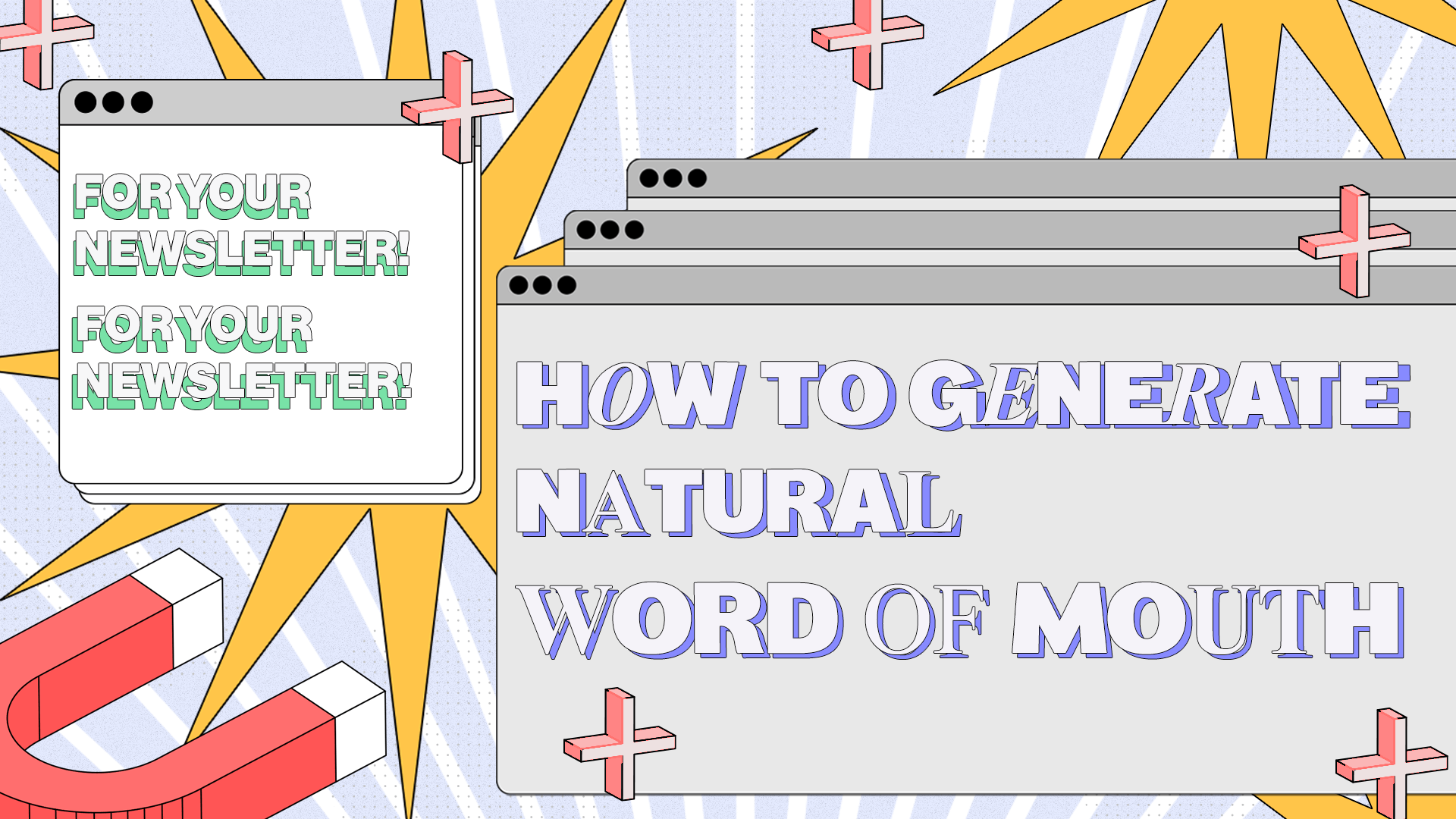Newsletters are dead.
It’s outdated and old-fashioned.
Have you heard any of this? I’m sure you have.
Or maybe right now, you are disheartened because your subscriber base remains stagnant despite months of effort and promotion.
But before you write off your newsletter as a waste of time and effort, let’s take a moment to challenge that notion.
Pause.
Breathe.
And consider this:
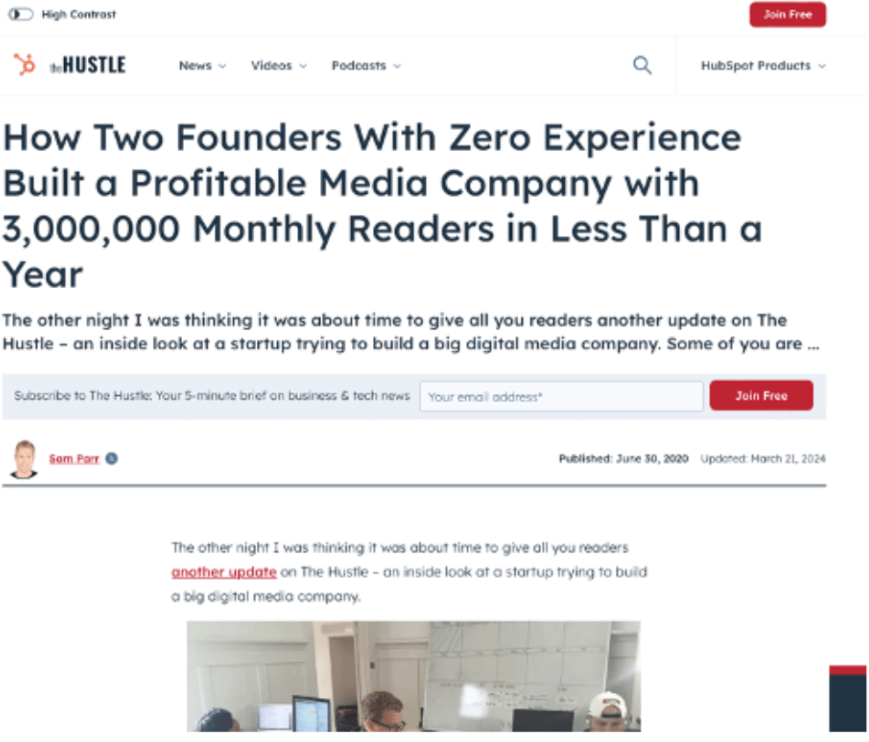
The title says it all.
The Hustle has gained millions of blog and email newsletter readers less than a year after its launch. How? If you read the bottom part of this article, the founder explained the main reason: Word-of-mouth.
Word-of-mouth marketing (WOMM) leverages happy newsletter subscribers to spread the word and invite their friends, families, and strangers to subscribe. It’s an organic and natural way to increase your newsletter subscribers without spending a dime on ads or other paid promotions.
But how can you generate natural word-of-mouth for your newsletter?
We’ll unpack this question here (and more), so keep reading.
What are Newsletters for?
In a world where social media posts vanish in seconds, and inboxes overflow faster than holiday shopping carts, newsletters remain the unsung heroes of meaningful communication.
Think of them as your reliable mail carrier. They deliver fresh insights, juicy updates, and exclusive deals straight to your subscribers.
So, what are newsletters really for? Let’s break it down:
#1. As the Main Business Operation
Newsletters are useful as a main business operation.
For instance, businesses focusing on promoting affiliate offers or paid ads benefit from newsletters as a primary channel to attract website visitors.
By incorporating carefully selected affiliate products and services that resonate with your audience, you can earn commissions on each click or purchase made via your newsletter. This diversifies your income streams and adds value to your readers by recommending quality products.
Take “The Skimm” as a prime example.
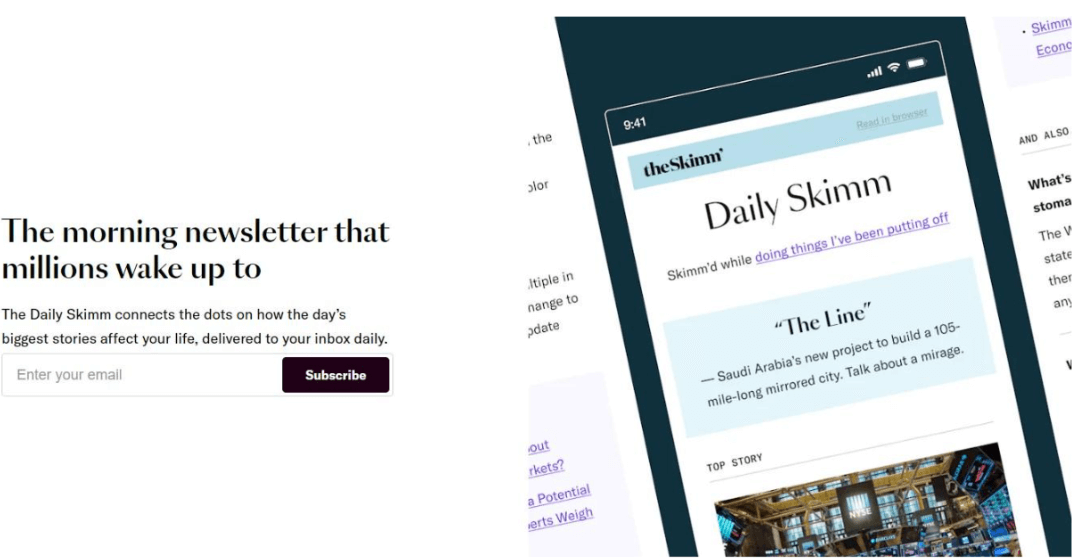
This newsletter masterfully integrates sponsored content from brands that resonate with its readers—the busy millennial women. This strategic alignment amplifies its effectiveness and profitability, showcasing a business model where relevant messaging and monetization go hand-in-hand.
We’ll talk more about this business and how they use newsletters later on.
#2. For Content Delivery
Let’s face it—content is king, and in the digital age, how you deliver that content can make or break your kingdom’s reign. That’s why newsletters have become the unsung heroes of content delivery.
All your invaluable insights, excellent blog posts, and irresistible offers are wrapped up in a neat little package that lands directly in your audience’s inboxes.
Like the Willy Wonka golden ticket of marketing, newsletters hold the power to transform curious browsers into loyal customers.
They’re equally effective for your product launch campaign, for sharing company news, or even for sprinkling a bit of industry wisdom. For instance, REI’s Co-op Journal consistently uses newsletters to share inspiring adventure stories, gear advice, and member-only events, thus fostering a sense of community and keeping their audience engaged.
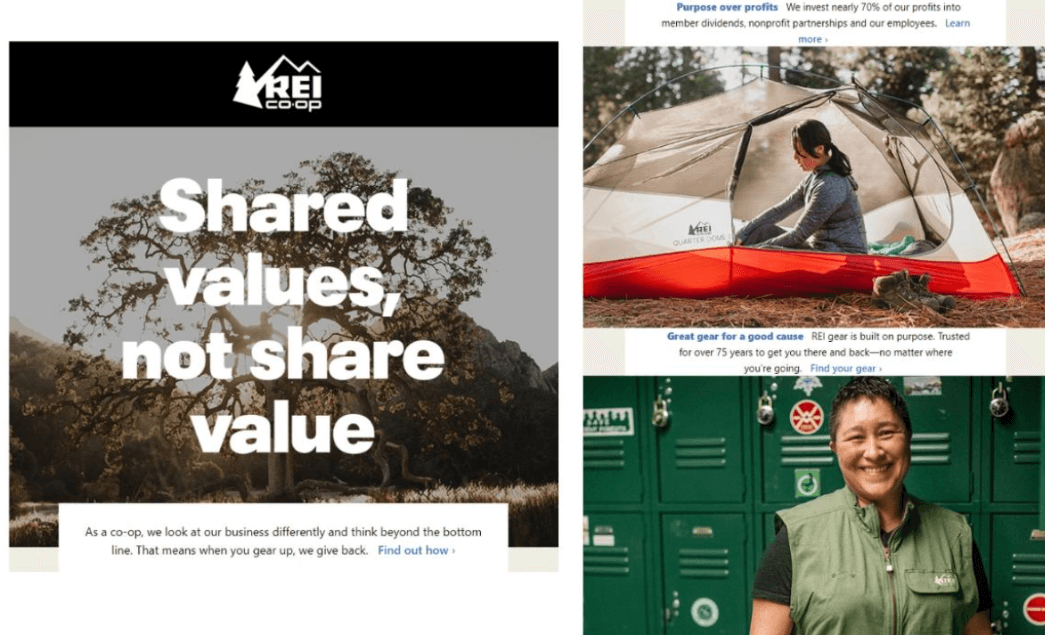
By consistently delivering valuable content, newsletters help maintain a steady and reliable touchpoint with your audience.
This isn’t just about shoving promotions down their throats—oh no—it’s about giving them something of value, like a top-notch insider tip or an exclusive sneak peek.
This establishes your business as a trusted resource, which is especially valuable in today’s information-overloaded world.
Moreover, the analytics goldmine that newsletters offer is indispensable. With tools that track open rates, click-through rates, and subscriber behavior, you can fine-tune your content strategy like a maestro conducting a symphony. You know exactly what strikes a chord and what falls flat, enabling you to craft content that truly resonates.
Done right, newsletters do more than communicate—they connect, captivate, and convert.
#3. For Lead Nurturing
From leads to new customers, newsletters have the potential to transform your existing customers into loyal ones or ‘warm’ leads who are ready for another purchase!
Newsletters serve as an effective tool to move customers through the marketing funnel. Consistent, valuable content nurtures potential customers, transforming them from mere leads into loyal advocates.
By sharing blog posts, case studies, or testimonials, you can address different stages of the buyer’s journey—raising awareness, generating interest, and eventually driving conversions.
When you segment your subscribers based on their interests and behavior, you can tailor your messaging to create a personalized experience that leads to conversion and return on investment (ROI)!
Here’s a proof.
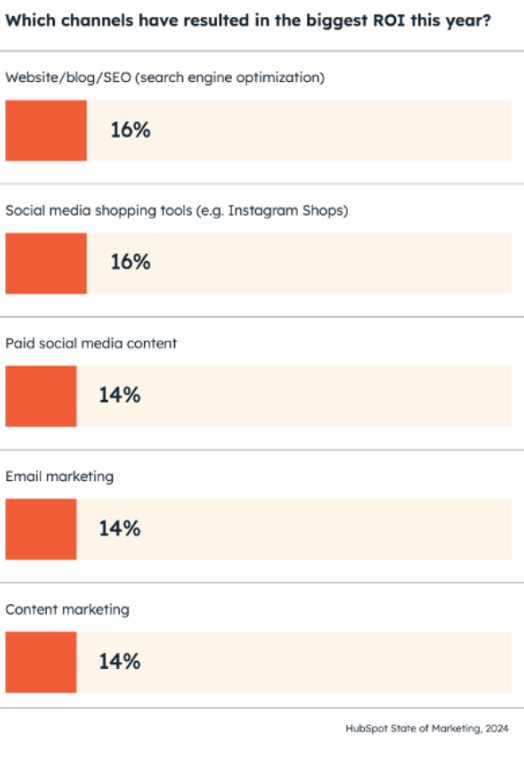
(Screenshot from HubSpot’s 2024 Report)
According to HubSpot’s 2024 State of Marketing Report, email marketing boasts a leading ROI position, making it a top-tier strategy for marketers. It provides a whopping 14% ROI, on par with the conversion rates seen from paid social media content.
This makes it an invaluable tool in your marketing arsenal.
In fact, email marketing is up against the top two most effective channels, including Website/Blog/SEO and Social Media Shopping Tools, both of which have a 16% ROI.
So, while social media might capture the flash and buzz, your email strategy (particularly newsletters) could very well be the quiet powerhouse driving substantial, tangible results.
#4. For Direct Promotions
When it comes to promoting your products or services, newsletters pack quite the punch. If you have a stellar product or service that could solve more problems than a superhero with a utility belt, then your newsletter is your Bat-Signal. It should shine a light on each individual pain point your diverse audience might have.
Maybe Sarah from Marketing is tired of her current CRM that feels more like a horror show than a helpful tool. Your latest newsletter can swoop in with a solution so tailored, she’d think you could read her mind.
Or maybe you’re launching a new product that’s hotter than the latest iPhone, or you’re running a limited-time offer so irresistible that even your competitors might sign up. Use your newsletter to spread the word, one headline at a time.
Glossier, the beauty brand, is a shining example of using newsletters well.
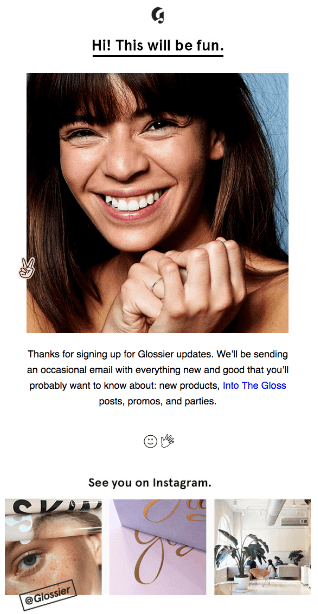
Glossier has mastered email marketing. Their emails highlight products and build a strong connection with their audience.
Glossier used its newsletters effectively, thereby boosting its brand presence. They now have a loyal customer base that’s always excited about what’s next.
#5. For Continuous Customer Engagement
Offering exclusive updates, discounts, or insights through your newsletter keeps the relationship vibrant and ready for activation. This ongoing engagement not only keeps your subscribers interested but also gives them a compelling reason to choose your business over competitors.
This is very critical as the cost of acquiring new customers can be 5 to 25 times more than retaining an existing one. More importantly, existing customers have a 50% higher chance of making another purchase and tend to spend 31% more than new customers.
The math is simple here:
Investing in customer retention is not just cheaper; it’s smarter.
Every time you send out a thoughtful, value-packed newsletter, you’re not just engaging your audience; you’re boosting your bottom line. So before you churn out another flashy social media post, think about your email list.
Nurture them, reward them, and watch them transform into your most profitable asset. Yes, it requires consistency and thoughtfulness, but the ROI is undeniable.
#6. Feedback Loop
Ever thought your inbox could double as a feedback factory? Well, it can.
Newsletters create a remarkable feedback loop that keeps on giving. How, you ask? By transforming those humble emails into interactive platforms for connection and learning.
You craft a newsletter that’s more engaging than a cat video, and at the end, you slip in a question. Maybe you run a poll about your latest content idea or ask for suggestions on what readers want to see next.
Better yet, you encourage replies with a simple query—”What did you think about this article?” Suddenly, your passive audience morphs into a buzzing hive of insights and opinions.
You can even use your newsletter to ask the all-important Net Promoter Score question:
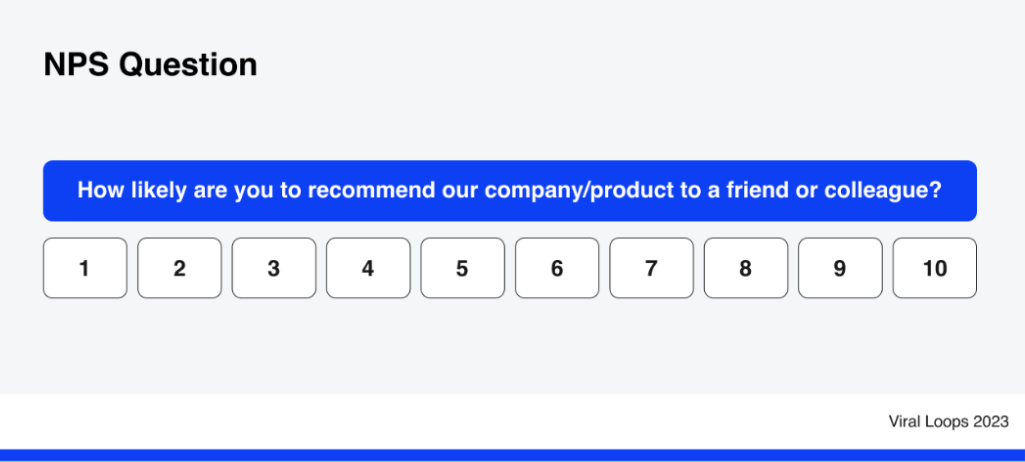
And here’s the kicker: this feedback isn’t just chatter. It’s gold.
Each response is a data point, a learning opportunity. It informs your next move, sharpens your content, and ensures you’re always in tune with your audience’s pulse. Who knew an email could also be a learning opportunity?
So, don’t just send newsletters.
Engineer them.
Create a cycle of feedback that not only engages your readers but also educates you on how to serve them better. After all, in the grand symphony of marketing, your audience should play the lead role.
How Effective are Newsletters?
A newsletter is your megaphone—a regular, targeted update informing subscribers about your product/s, service/s, or brand. It’s a direct line to communicate the latest news and updates.
Of course, you could also promote this information on other platforms. But here’s the deal:
‘Platforms’ come and go, but newsletters are timeless.
Despite the explosion of mobile messengers and chat apps, email newsletters stand resilient.
Here are some stats to back this up:
- 55% of consumers favor email for business communication. According to Constant Contact, this preference dwarfs other channels like social media (27%) and SMS marketing (17%). Newsletters remain one of the few ways to reach your audience without being subject to changing algorithm rules.
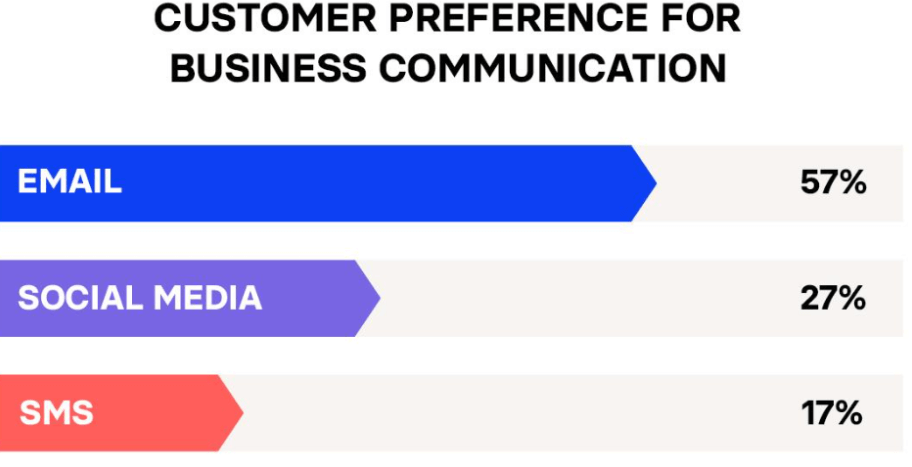
- 99% of email users check their inbox every day and mostly first thing when they wake-up (OptinMonster).
- Statista estimates 4.26 billion global email users in 2022, it’s a digital behemoth. Projections show this number soaring to 4.73 billion by 2026.
If you’re hesitant about the relevance of newsletters in today’s context, these figures should prompt a serious reconsideration.
What is Natural Word of Mouth Marketing?
Before we proceed with methods of gaining wider attention for your newsletter, let’s get one thing out of the way: what is natural word-of-mouth marketing?
Natural (also known as organic) word-of-mouth marketing happens when happy customers rave about their experiences without any prompting. Unlike traditional ads that pay to convince you, organic word of mouth relies on real people sharing their genuine excitement.
Think of it as stumbling upon an amazing new café and eagerly telling your friends — it’s personal, trustworthy, and free of corporate agenda.
But how is it different from other marketing?
Regular marketing leans on paid ads and influencers, almost like hiring someone to say nice things at a party. But organic word of mouth? It’s your friend pulling you aside to gush about their amazing dinner.
The beauty lies in its authenticity.
No scripts, no payments — just true enthusiasm spreading like wildfire, igniting genuine interest and trust.
The question is — how do we start a spark for this wildfire?
People need to talk about your newsletter to get more subscribers—it’s non-negotiable. All marketers would support the critical role of word of mouth in customer acquisition.
And if you think telling your customers:
“If you like us, tell your friends about us.”
…is enough, you’re dead wrong.
Word-of-mouth marketing hinges on people trusting recommendations from their peers more than any other form of advertising.
Unlike the skepticism often associated with paid promotions, word-of-mouth referrals are viewed as trustworthy and dependable. When people talk about your newsletter, they’re not just relaying information; they’re giving a personal endorsement, which carries far more weight than any ad ever could.
To give you supporting figures, 90% of consumers trust a brand when recommended by a friend.
But that’s not all.
This organic approach not only drives traffic but also builds a community of advocates who willingly promote your newsletter because they genuinely believe in it.
Tips on Generating Natural Word of Mouth For Your Newsletter
Can I be honest with you?
Building a subscriber base for your newsletter isn’t a walk in the park. The Hustle didn’t just launch theirs and let their 300 initial subscribers do the work for them.
It requires creativity, meticulous planning, and execution. But here’s the good news: you’re not starting with a blank slate.
Here are some tried-and-true strategies to spark genuine word-of-mouth buzz for your newsletter.
1. Deliver Unmatched Value to Your Audience
Content is king, period.
Insightful, relevant, and helpful content that aligns with your audience and brand identity is crucial.
If your readers aren’t hooked, they won’t book and spread the word.
Take ‘The Van Trump Report.’
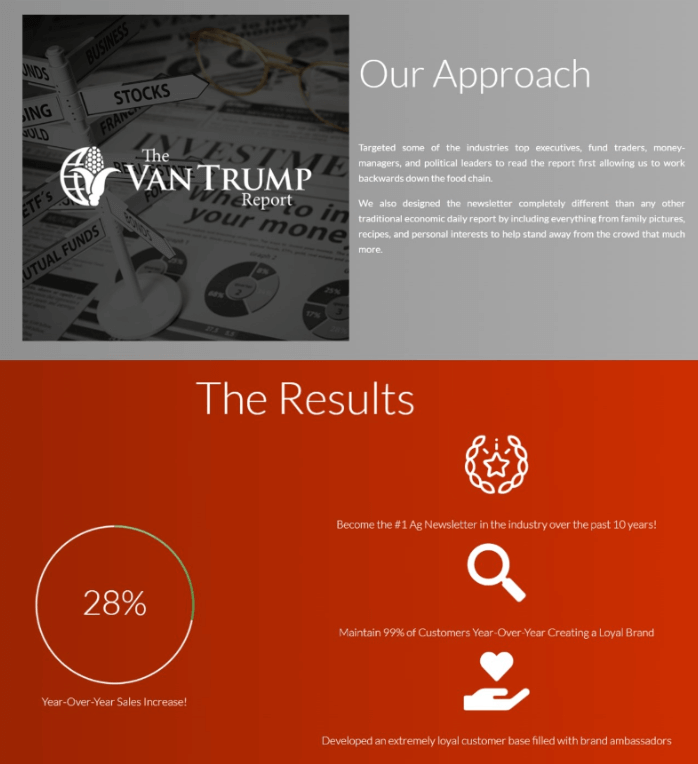
This agribusiness newsletter targets agriculture professionals and investors, delivering analysis and actionable insights on market trends.
Its goal is to support the audience in making informed decisions in their agribusiness, earning the trust and loyalty of their subscribers.
They have become the number 1 Ag Newsletter for the past 10 years!
2. Encourage Subscribers to Share Your Newsletters
You can do it in two ways:
- Directly encourage your subscribers to share it with friends through a highly engaging copy. For example, a simple CTA like ‘Forward this newsletter to someone who could benefit from it’ can go a long way.
- Incorporate social media bars in your newsletters so that subscribers can easily share the content on their social media platforms with just one click. This strategy not only helps reach a wider audience but also allows for easy tracking of shares and engagement.
3. Offer incentives for referrals.
Set up a newsletter referral program that rewards subscribers for bringing in their friends. Think of incentives to your referrers and/or referees like:
- Discounts
- Merchandise or company swag
- Free digital products
- Access to exclusive content or communities
- Cash
People love sharing stuff when it benefits their friends, too!
This creates a win-win situation: You can tap your subscribers’ networks to acquire new ones faster and more enjoyable while leveraging word-of-mouth.
Referral also enhances the engagement and retention of your clients. Take, for instance, the experience of Morning Brew:
“Unsurprisingly, we’ve also seen that after a reader refers a friend, their engagement with the newsletter strengths and their lifetime with us is on average much longer than that of a reader who never refers.”
- Jenny Rothenberg
Director of Growth at Morning Brew
Make sure to check out our Youtube video on Referral Rewards for more info!👇
Author’s Note: While we’re on the subject of rewards, we can finally announce our latest feature!
Now, with Viral Loops Rewards all accounts are fully equipped to connect and send actual rewards. That’s right! Through our latest integrations with Stripe and Tremendous, sending out gifts takes no time. This makes the process for creating your next referral campaign a breeze!
We’ll talk more about the Morning Brew later down the line.
4. Gamify Your Newsletter
Incorporate gamification elements like contests, quizzes, and giveaways to make your newsletter more engaging and interactive.
When subscribers are excited about winning a prize, they’re more likely to share your content with friends and networks. Much better if you incorporate the sharing aspect into the game.
Gamification also creates positive emotions around your newsletter, organically boosting its reach and attracting new subscribers. It also can increase conversion by 400%!
Check out this analysis made by Stripo in their gamified Valentine’s Day newsletter. Gamification increased the opening rate, click to open rate, and click-through rate!
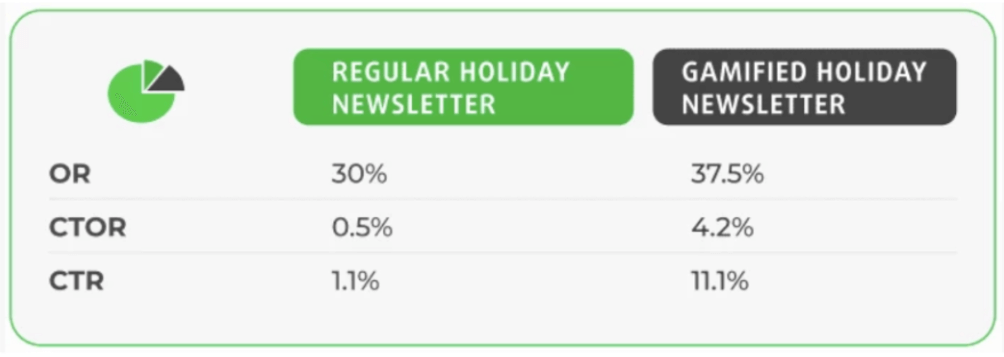
If you gamify your next issue, you have a chance at harvesting similar outcomes.
5. Collaborate with Influencers
Partnering with credible influencers can greatly expand your newsletter’s reach, enhance visibility across platforms, and increase social proof.
This strategy broadens your audience and builds trust, driving higher engagement and conversion rates.
Two examples here.
In 2021, the Frye Company, a shoe company, partnered with content creator and blogger HilLesha O’Nan to promote its newsletter. O’Nan provides discount coupons to her followers who will order the newsletter.
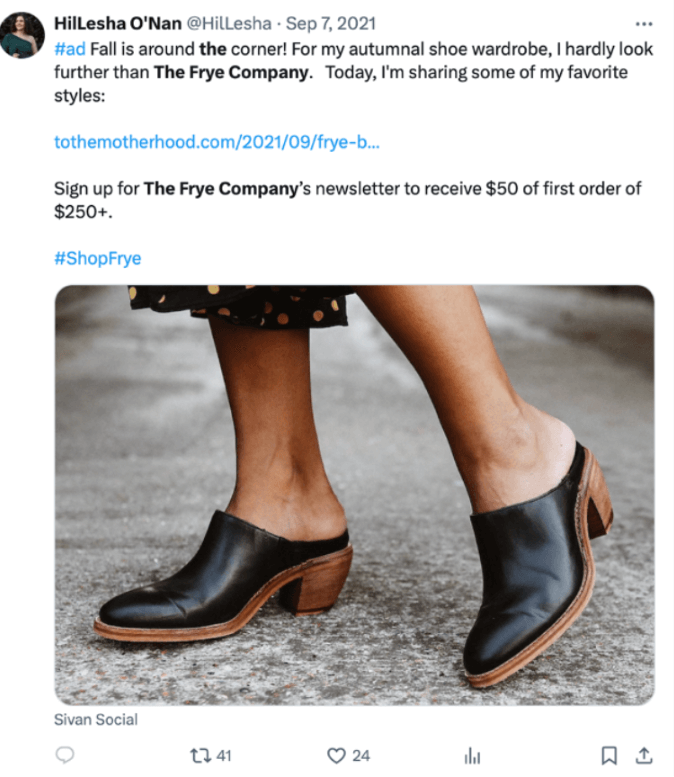
Covers’ also partners with influencers in the sports industry, like Rohit and Josh Inglish, betting analysts, to promote its newsletters. The strategy emphasizes the benefits of subscribing rather than relying on giveaways or discounts, as shown below:
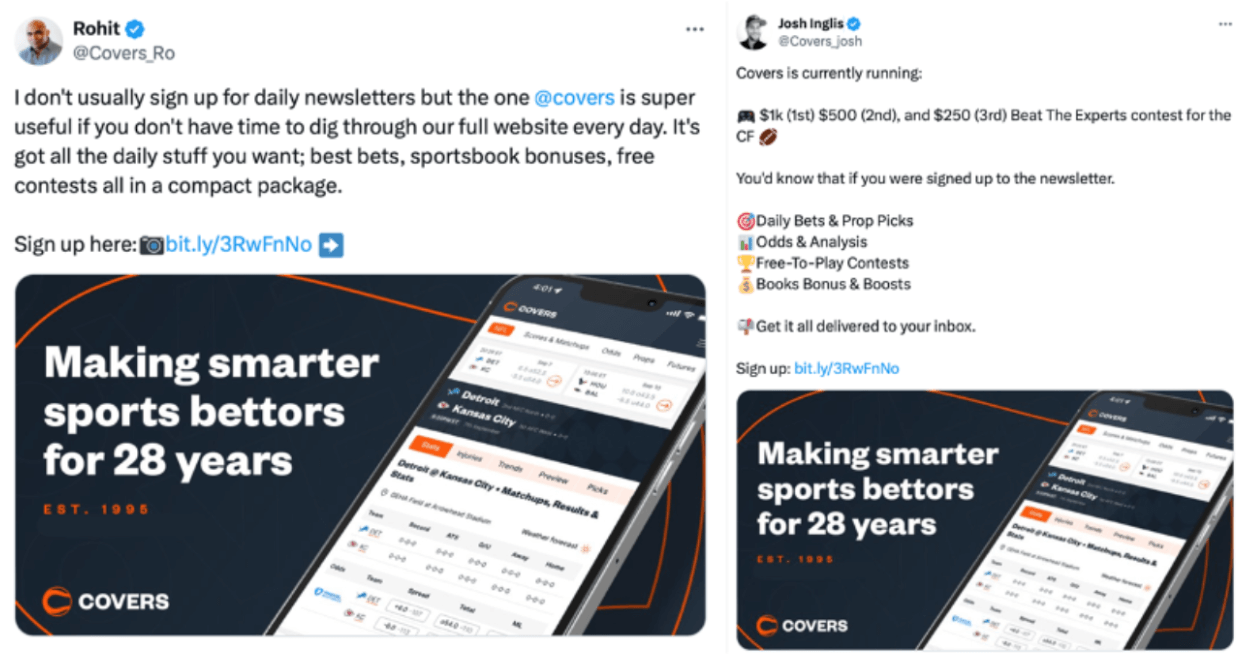
6. Encourage Community Contributors
Invite guest contributors to add diverse perspectives and fresh, compelling content—feature user-generated content, such as testimonials or stories.
Imagine the ripple effect: when your community or their achievements are showcased, they are likely to share it enthusiastically within their networks. This not only amplifies your reach organically but also fosters trust and credibility, increasing the likelihood of new subscribers through powerful recommendations.
Take ‘The Readers Digest’ as an example. They use this strategy and even pay $200 for every story published by a guest contributor! They then feature these stories in newsletters to capture the attention of their subscribers and encourage them to purchase or read the latest edition (if they are on a monthly subscription).
Here’s another example from Jens of Newsletter Rebels.
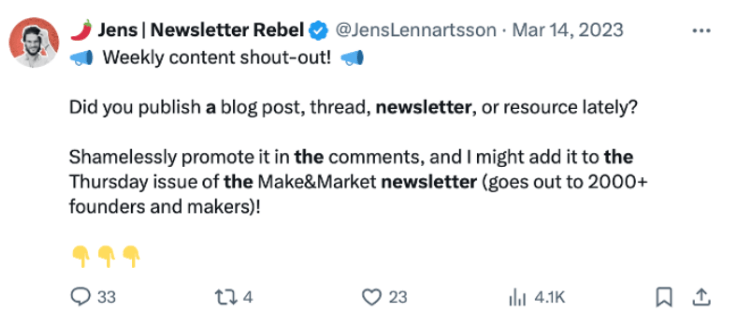
If you visit his tweet, you’ll see high engagement among readers and cross-recommendations in other newsletters!
7. Add Personal Touch
Adding a personal touch to your newsletter can significantly enhance its engagement and encourage word-of-mouth marketing. In fact, personalized email subjects alone could increase open rates by 50%!
Here’s the trick: start by addressing your readers by their first names to foster a sense of familiarity and connection.
Personalized recommendations based on your readers’ preferences and previous interactions can also demonstrate that you value their individual needs and interests.
This can be done by segmenting your email subscribers and sending newsletters based on their grouping. You don’t have to create dozens of segments — around three would be enough.
They don’t even have to be vastly different, just enough to make each email personal to a segment. This way, your email becomes shareworthy.
8. Exclusivity and Scarcity
Leverage ‘Fear of Missing Out’ (FOMO) psychology.
People are more likely to take action when they feel like they’re missing out on something special. Use your newsletter to offer exclusive content, promotions, or early access to products or services.
This creates a sense of urgency and can lead to increased conversions, as seen in the success of flash sales.
Take a look at this real-life example from the World Press Photo. It encourages people to sign up to their newsletter to be among the first to learn about the winners of their prestigious photo contest.

Furthermore, newsletters provide an opportunity for scarcity marketing.
By limiting access to certain offers, products, or even information to your subscribers, you create a buzz and demand for your business.
People don’t want to be left behind. So, if you add exclusivity to your service, signing up is a no-brainer.
Consider Backlinko’s impressive sign-up copy below. The “we don’t share elsewhere” line surely explains itself.
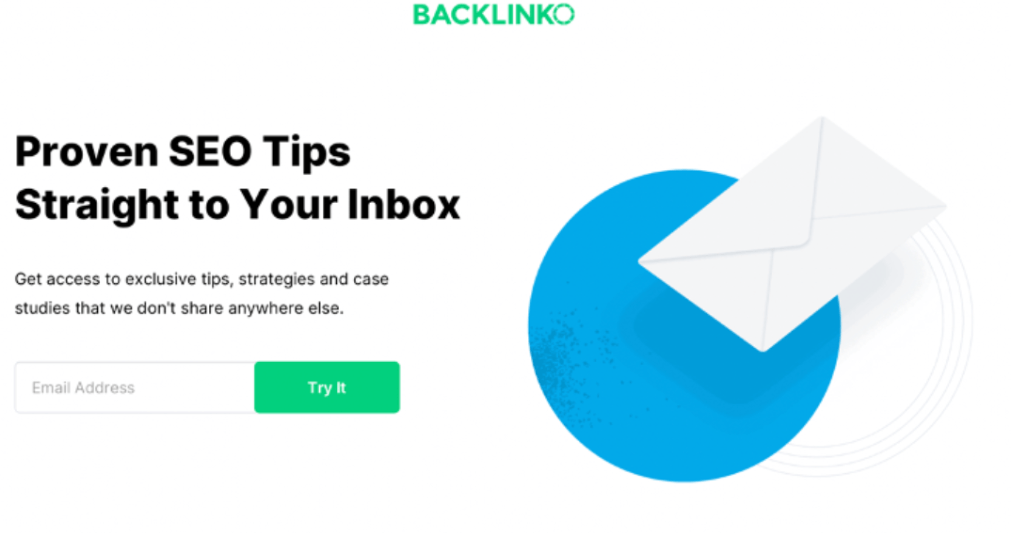
9. Make It Fun and Informative
Combine entertainment with information to keep your readers hooked.
Who says newsletters have to be boring? Spice up your content with interesting tidbits, engaging stories, or even a bit of humor here and there.
Mixing valuable insights with light-hearted elements will not only make your content more enjoyable but also more memorable. You can even share memes if your subscribers like that sort of thing.
Here’s Stacked Marketer featuring memes to drive home a point:
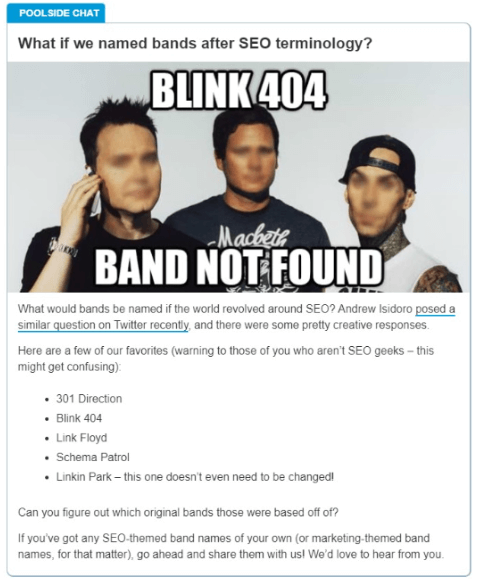
There’s also this popular digital comic, ToonDoo, which is occasionally featured in business newsletters. These comics provide a refreshing break from routine newsletters, injecting humor while subtly driving home messages.
Plus, sharing a comic with a friend is much easier than sharing a paragraph on marketing trends!
You can also sprinkle in fun facts, trivia, or a ‘Did You Know?’ section relevant to your industry. People love learning new things, especially when it’s presented in a fun, digestible manner.
This approach makes your newsletter a little more human and a lot more relatable. Trust us, a little fun goes a long way in keeping readers coming back for more.
Real-Life Examples of Newsletters that Succeeded with Word-of-Mouth
The Hustle truly hustled its way as a successful newsletter through word-of-mouth and referral programs. But they are not alone in this space.
And there are many other real-life examples you can copy. Let’s talk about them and their strategies so you can apply them to your own.
Morning Brew
Launched in 2015, Morning Brew keeps readers both informed and entertained within just 5 minutes every day (same length of taking that morning coffee).
To build a subscriber base of 6 million readers, Morning Brew developed a robust acquisition strategy centered around their referral program.
Here’s how it happens.
First, they have consistent promotions every day. Morning Brew sends unique referral codes daily, which can be found at the bottom of their newsletter.
Second, their process is integrated. Their “Click to Share” buttons are then connected to a personalized referral hub where they can:
- Directly share their referral codes through email, social media, and other platforms, and
- Track their referral progress and rewards.
Finally, they utilize a tiered approach that offers different rewards per milestone. The program offers different company swag or merchandise to those who successfully refer new subscribers to the newsletter.
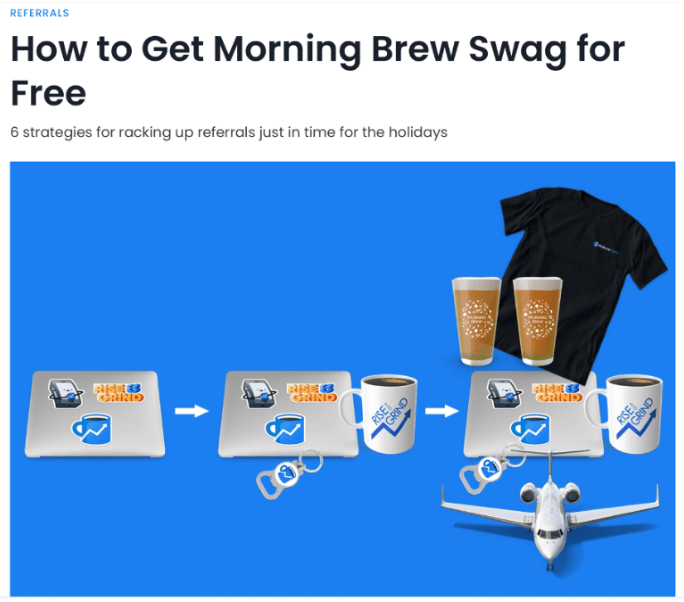
It’s clear and easy!
According to Morning Brew, their referral program constitutes up to 35% of their customer acquisition.
MindValley
MindValley has mastered the art of word-of-mouth expansion like a true course ninja. They encourage their readers to share their insightful emails with friends and family who would benefit from the knowledge bombs they drop.
Why all the fuss about MindValley? Well, let’s just say they’re not your average company.
Founded by Vishen Lakhiani, MindValley has blossomed into one of the most influential education companies globally. They offer transformative courses that cover everything from personal growth to entrepreneurship, all aimed at helping people level up their lives.
With millions of students from all around the world, it’s no wonder sharing their emails is like handing out golden tickets to personal development paradise.
The key to their success?
MindValley makes it a point to create newsletters that are share-worthy by adding valuable content on self-improvement and even free classes and guides on how to apply their teachings!
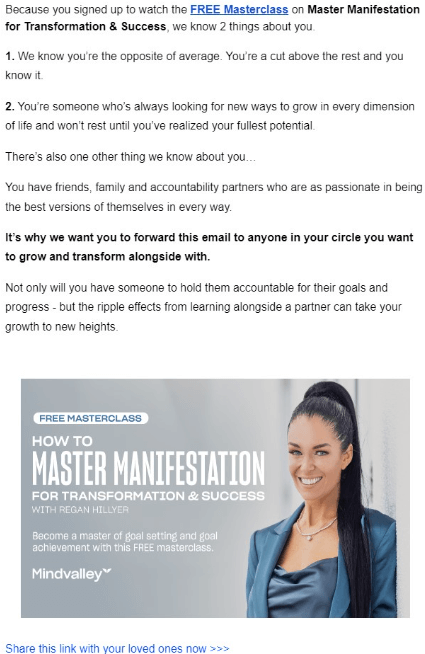
The moment you see the content, you know for yourself that it will help someone you know because you’ve tried it. So if it doesn’t cost a thing, why not share it, right? If there’s value, it will be #ShareWorthy.
If you evaluate the email sent above, you’ll see that:
- This newsletter is targeted to a certain audience segment, which is people who’ve watched the Free Masterclass on Master Manifestation.
- The goal of the email is to encourage the reader to share the same course with others.
It is not a random newsletter, which makes it perform well when it comes to generating natural word-of-mouth.
The Skimm
The Skimm isn’t just another newsletter. It’s a daily newsletter that distills the news into easily digestible bites tailored specifically for busy millennial women.
But how did they manage to get people talking?
By understanding their audience so well.
The Skimm crafted content that resonated on a personal level. They dealt with the FOMO by sending succinct, engaging news summaries that subscribers couldn’t help but share with their friends.
That’s right—subscribers became unofficial ambassadors, forwarding their morning dose of The Skimm to everyone in their contacts list.
Another secret sauce? The Skimm’s peer referrals.
A whopping 10% of their sign-ups come from the so-called Skimm’bassadors. We delved deep into their strategy in this article, but here’s the CliffsNotes version:
- The Skimm requires you to make ten referrals to gain entry to their Skimm community.
- They have a milestone-based referral program with a treasure trove of rewards, scaling up as you bring in more referrals.
- Sharing is a breeze—they’ve integrated sharing buttons and even offer “cheat sheets” to help you rack up more referrals.
These strategies seamlessly blend value with virality, creating a natural buzz and cementing The Skimm as a staple in modern media consumption.
Wrapping It Up
Alright, folks, let’s bring this home. We’ve covered quite a bit, haven’t we? From the nitty-gritty details to the big picture, there’s a lot to digest.
But here’s the kicker—none of this matters if you don’t put it into action. You heard that right. All the knowledge in the world is useless if it just sits there gathering dust.
Imagine applying what you’ve learned and seeing your newsletter subscriptions skyrocketing just by people talking about it. Pair that with solid referral programs, and boom! You’re tapping into your current readers to bring in new ones, creating a growth loop. It’s like a never-ending subscription party!
But hold up! Don’t just wing it. You’ve got to track those word-of-mouth efforts with some analytics wizardry. Whether it’s Google Analytics, HubSpot, or some fancy referral marketing software like Viral Loops, these tools will show you what’s hot and what’s not.
Keep an eye on those metrics, tweak your strategies, and make decisions based on cold, hard data. Trust us, having numbers on your side makes the process a breeze — and dare we say, even fun!
So, get your newsletter marketing game as sharp as your morning coffee, and watch those subscribers roll in. Cheers to that!
